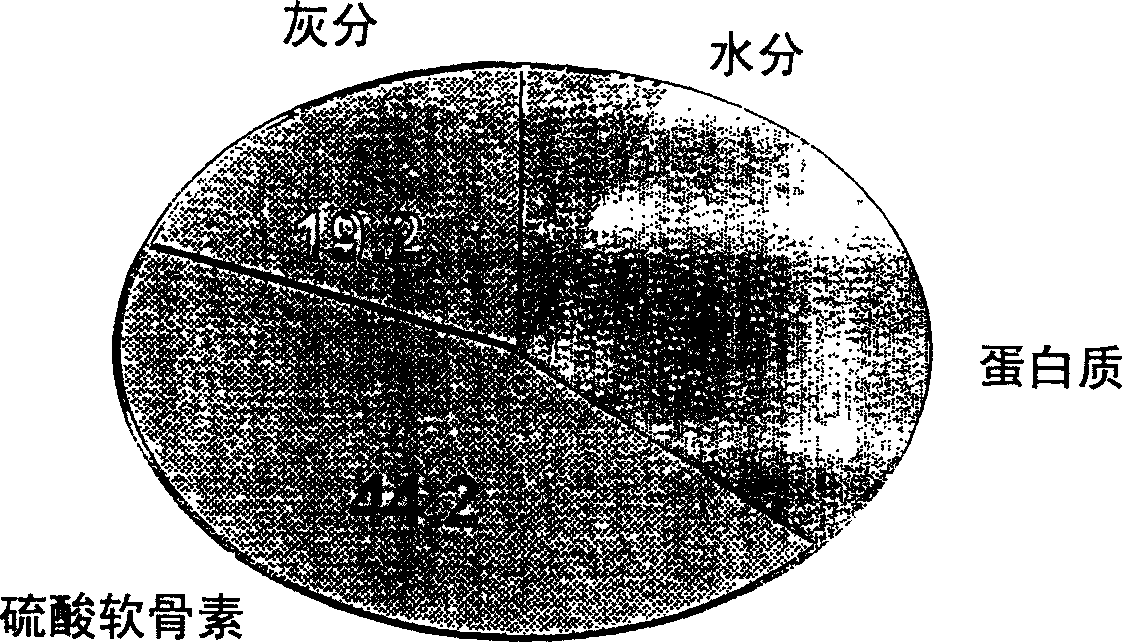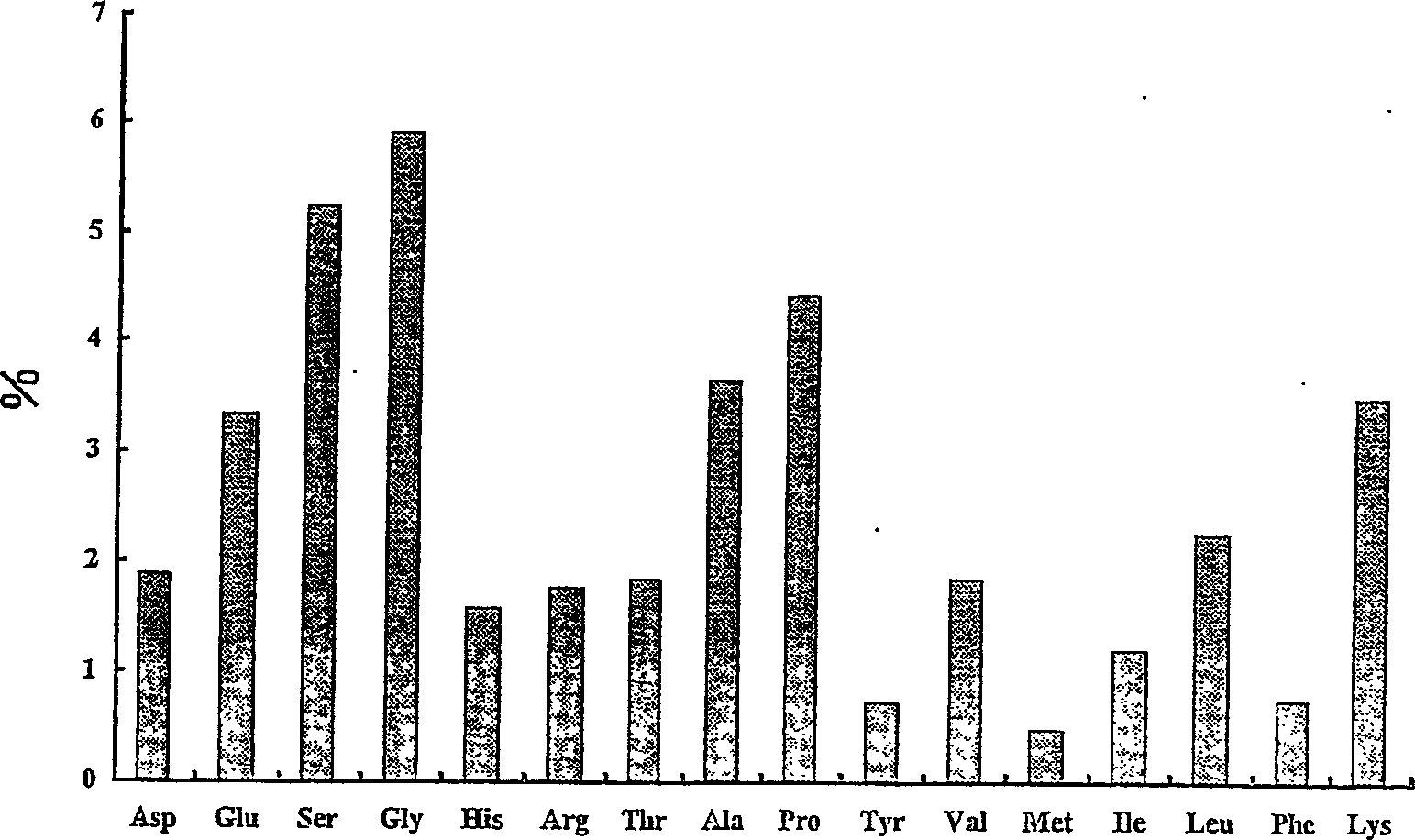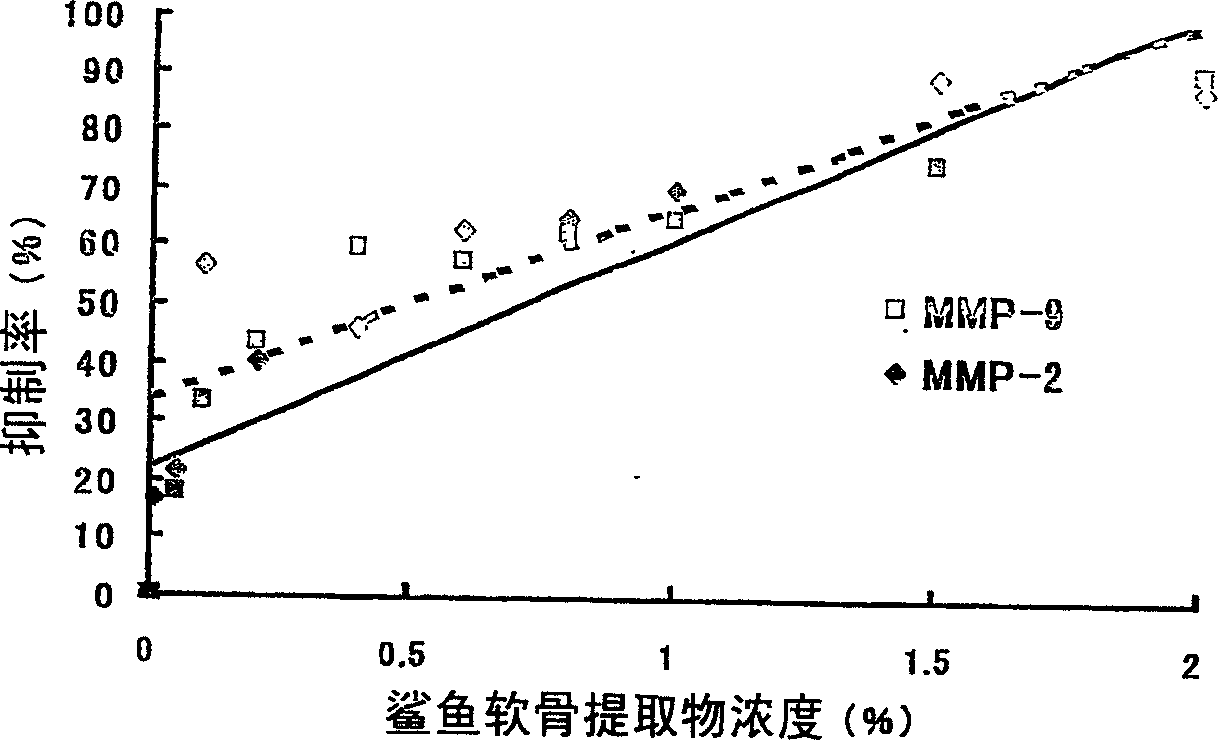Proteoglycan isolated from cartilaginous fish and process for producing the same
A technology of proteoglycan and cartilage, which can be applied to medical preparations containing active ingredients, peptide/protein components, bone diseases, etc. It can solve the problems that the tumor inhibition effect of shark cartilage is not clear, etc.
- Summary
- Abstract
- Description
- Claims
- Application Information
AI Technical Summary
Problems solved by technology
Method used
Image
Examples
Embodiment 1
[0098] Isolation of Proteoglycans from Shark Cartilage
[0099] (1) Modulation of Shark Cartilage Extract
[0100] Sun-dried shark cartilage (cartilage of blue shark) was roughly pulverized with a coarse pulverizer (manufactured by Hosokawa Micron Co., Ltd., FM-1) to an average particle size of about 5 mm. The obtained coarsely pulverized product was pulverized together with liquid nitrogen using a freeze pulverizer (manufactured by Hosokawa Micron Co., Ltd., LX-1) to obtain a fine powder with an average particle diameter of 25 μm. The average particle diameter is measured using Microtrac 9320HRA (manufactured by Leedsand Northrup). 15 kg of distilled water was added to 3 kg of the obtained fine powder, stirred at room temperature for 20 minutes, and then centrifuged (5 minutes, 3000 rpm) to obtain a supernatant. 10 kg of distilled water was further added to the remaining residue, and after stirring at room temperature for 20 minutes, centrifugation was performed in the same...
Embodiment 2
[0132] Effects of intake of shark cartilage extract relative to cancer-bearing hamsters
[0133] (1) Preparation of experimental diet
[0134] As a basic food, CE-2 powder purchased from Japan CLEA Co., Ltd. was used. As an experimental food, the shark cartilage prepared in Example 1 (1) was added in 0.2% by weight or 0.4% by weight in the basic food. Extract (hereinafter, % by weight may be abbreviated as %). The following hamsters were free to eat the above-mentioned basal diet and experimental diet. Water was also available ad libitum. The body weight and bait intake of each hamster that ingested the experimental diet were measured. There were no significant differences in body weight and differences in bait intake among the same groups.
[0135] (2) Experimental animals
[0136] Syrian golden hamsters (6 weeks old) were purchased from Japan SLC Co., Ltd. Every 4-5 hamsters were put into a plastic cage for feeding in a rearing room adjusted to a room temperature of 24...
Embodiment 3
[0154] Amount of haptoglobin in hamster serum
[0155] The serum of non-cancer-bearing hamsters ingesting shark cartilage extract for 2 weeks was separated by SDS-PAGE, and CBB staining was performed. As a result, the band at about 80 kDa increased in the experimental diet group compared with the basal diet group. The above-mentioned 80kDa band was excised and subjected to structural analysis (protein sequencing: PPSQ21, manufactured by Shimadzu Corporation), and it was found to be hamster endogenous haptoglobin (α chain: VDLSNDAMDTADDS (sequence number: 1), β chain: IIGGSLDAKGSFPW (sequence number No.: 2)).
[0156] Haptoglobin has functions such as binding to oxidized hemoglobin produced by hemolysis, and neutralizing the toxicity of oxidative vascular disorders. Represented by hemolysis, it has recently become an indicator protein for many diseases such as the malignancy of cancer (Pathol Oncol Res.1998; 4(4) : 271-6, Br J Cancer. 1991 Aug; 64(2): 386-90). In addition, t...
PUM
| Property | Measurement | Unit |
|---|---|---|
| particle size | aaaaa | aaaaa |
| molecular weight | aaaaa | aaaaa |
| particle size | aaaaa | aaaaa |
Abstract
Description
Claims
Application Information
 Login to View More
Login to View More - R&D
- Intellectual Property
- Life Sciences
- Materials
- Tech Scout
- Unparalleled Data Quality
- Higher Quality Content
- 60% Fewer Hallucinations
Browse by: Latest US Patents, China's latest patents, Technical Efficacy Thesaurus, Application Domain, Technology Topic, Popular Technical Reports.
© 2025 PatSnap. All rights reserved.Legal|Privacy policy|Modern Slavery Act Transparency Statement|Sitemap|About US| Contact US: help@patsnap.com



